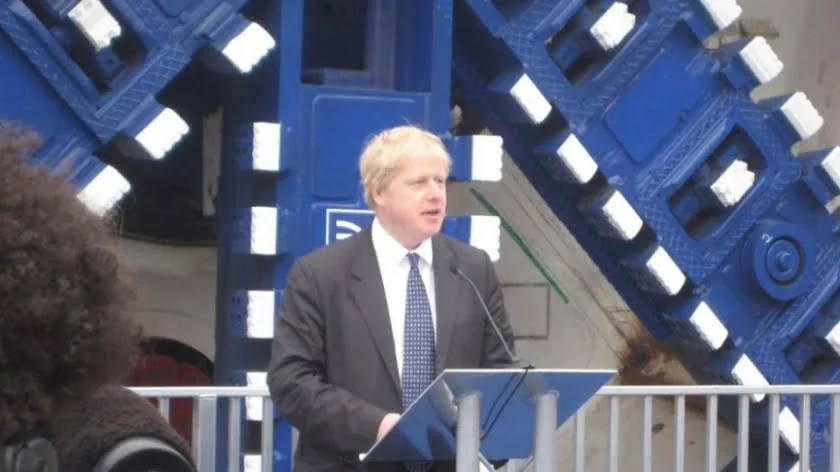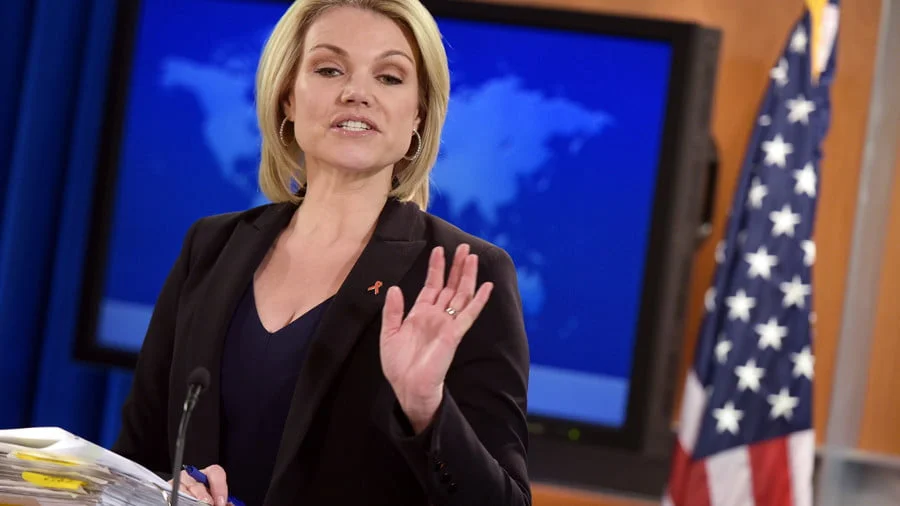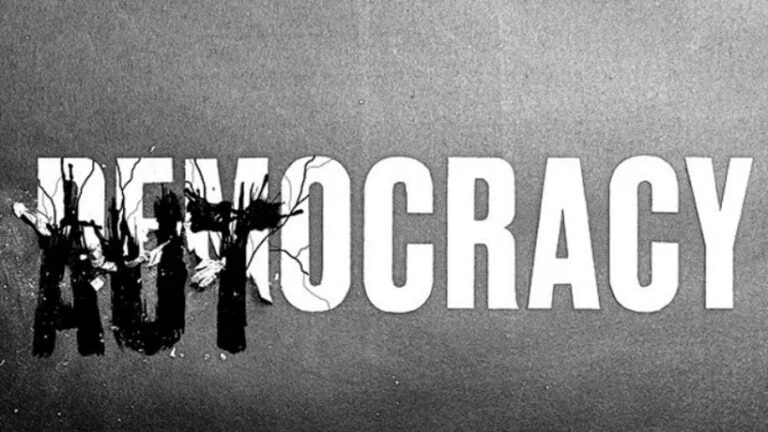Russian Green Deal: Light at the End of the Tunnel?
In October 2021, the Russian government finally released its plan to achieve carbon neutrality—by 2060. That’s 10 years after the target date most other countries have adopted. The plan relies more on offsets—like forests that absorb carbon dioxide—rather than significant cuts in emissions. But for the world’s fourth largest emitter of carbon dioxide—and the world’s largest exporter of natural gas, second largest exporter of petroleum, and third largest exporter of coal—Russia’s announcement was an important policy shift.
“Before this year, Russia was rather skeptical about climate change and the role of people in climate change,” reports Tatiana Lanshina. “But this year, the official rhetoric actually changed a bit.”
One reason for that shift in rhetoric was the very real impact of climate change on Russia over the last year. Flames consumed huge stretches of Siberian forest over the summer in what turned out to be a record year for wildfires. Flooding in southern agricultural regions disrupted farming which, combined with droughts elsewhere, has threatened the country’s food security.
“The number of dangerous natural disasters has grown more than three times over the last decade compared to previous ones,” observes Vasily Yablokov. “According to Roshydromat, the Russian Federal Service for Hydrometeorology and Environmental Monitoring, there were a thousand dangerous natural disasters in 2020, 372 of which caused significant damage to people and the environment.”
Another reason for the shift in government rhetoric has been greater public awareness of climate change. According to a Romir public opinion poll in December 2020, more than 80 percent of Russians believe that climate change is a real problem and that Russia suffers from climate change rather than benefits from it. More than half of Russians consider climate change a current threat, not just a future threat.
At least some of that concern has translated into public action. In March 2019, Arshak Makichyan took his cue from Greta Thunberg to launch a Fridays For Future climate protest in Russia. At first, he was protesting by himself, but gradually more and more people joined him. “We were organizing this movement, and it was growing,” Makichyan says. “Then the pandemic came, and the government used it as an excuse to restrict human rights in Russia.”
In 2020, Tatiana Lanshina and Greenpeace produced a Russian Green Deal that provided a framework for the government to decarbonize and transform the Russian economy. It hasn’t yet attracted the support of the Russian government. But a number of Russian politicians have endorsed the initiative, and parts of the plan have been taken up by provincial authorities.
The situation in Russia remains bleak. The government is committed to increasing fossil fuel production and exports in the medium term, and the share of renewables in electricity production in the country remains negligible. The space for environmentalism activism has narrowed. Russia even vetoed a recent UN effort to treat climate change as a global security threat.
But economic realities such as the falling price of renewable energy and the pressure on Russian businesses to meet new decarbonization standards in other countries may accelerate the timeframe of transition. Much will also depend on the work of environmental organizations and courageous activists.
One thing is for sure: no global just transition can take place without the participation of Russia.
Russia Hit Hard
Russia is a vast country that stretches across 11 time zones, so climate change has had widely different effects throughout the territory, beginning with temperatures. “In the western part, it is colder than normal by 15 degrees,” reports Vasily Yablokov, “while in the far east it is warmer by 20 degrees. On average, the warming has been a half a degree per decade in Russia, which is 2.5 times higher than the global average.” In all, 2020 was the warmest year on record for Russia.
There have been an unprecedented number of weather anomalies. “Some regions report drought damage that has cost 10 percent of their total budget, for example in Tatarstan,” Yablokov continues. “In other places, the rainfall has resulted in flooding, for instance in the southern agricultural regions. Floods in Krasnoyarsk led to the evacuation of 1,500 people. Flooding along the Black Sea coast caused serious damage to the tourism industry. This year, 40 regions declared emergencies because of natural disasters. The droughts, crop failures, and flooding threaten the food security of country.”
But perhaps the most widely reported impact of climate change has been the wildfires in the taiga forests of Siberia and the Russian Far East. “This year was a record year, not only in the scale of forest fires by area—approaching 19 million hectares and growing—but also in the number of fires in the Arctic zone,” he adds. “These disasters are happening for the fourth year in row. According to experts, the fires in Yakutia alone produced 800 million tons of carbon dioxide, and they predict that such disasters will continue, possibly every year. The fires are producing smoke in large cities, especially in Siberia, which is extremely dangerous for human health, especially during the pandemic.”
Smoke from wildfires is not the only side effect of climate change to threaten the health of Russians. Heat waves have put a burden on the health system and caused excess deaths. Overall warming has encouraged the spread northward of Lyme disease, hemorrhagic fevers, and other ailments.
Meanwhile, the permafrost that covers nearly 60 percent of Russia has begun to melt, and the consequences are close to catastrophic. In melting, the organic mass begins to release methane. “Some experts call it a methane bomb,” Yablokov reports. “It’s a feedback loop: burning fossil fuels leads to an increase in temperature, which releases methane, and the temperature goes up even higher. I’m not sure we can stop this process. Nevertheless, Greenpeace activists believe we must do everything possible to slow it down.”
The melting of the permafrost also puts a stress on Russian infrastructure such as roads and oil and gas facilities. In May 2020, an oil tank collapsed near Norilsk, a city in Siberia, releasing 21,000 tons of petroleum into a nearby river. A major reason for the collapse was melting permafrost. “Several hundred oil spills occur annually,” Yablokov says, but it’s unclear the role that melting permafrost plays “because there is no systematic observation.” Another result of the melt is the outbreak of diseases like anthrax, which infected more than 2,000 reindeer in 2016. Siberia is home to innumerable frozen corpses of animals and humans killed by diseases like smallpox and the plague, which a thaw could re-release into the general population.
Another feedback effect can be found in the Arctic where higher temperatures melt the ice. The disappearance of the ice cover produces what is called the ice-albedo effect, which gradually eliminates the ability of the land to reflect back the sun and boosts the temperature accordingly. “Last year was another record for the ice-albedo effect and a large increase in the absorption of heat in the Arctic Ocean,” Yablokov continues. “The Arctic is one of the most vulnerable parts of the planet, and climate change shows more strongly in the polar region. Nevertheless, this hasn’t stopped the Russian government from starting new infrastructure projects in the region, which are not economically feasible and are very dangerous under current conditions, like drilling wells for oil and gas production.” On top of that, the polar ice melt has increased sea traffic, which has only further exacerbated environmental conditions in the region.
“Russia doesn’t evaluate climate risks, so we don’t know the exact costs of these policies,” Yablokov laments. “Russia doesn’t yet have a clear plan on how to adapt to climate change. It has no clear understanding of climate risk. Meanwhile, according to surveys this year, most Russian citizens are worried about their future and perceive climate change as a threat.”
Russia’s Green Deal
This year, the Russian government announced that the country would achieve carbon neutrality by 2060. It then released a strategy on how to achieve this goal. However, other strategies, such as the Energy Strategy up to 2035 (adopted in 2020) provide for plans to extract and export more gas and coal through 2035 while keeping the level of oil extraction about the same.
“So, this means that we are not going to change the economy or diversify it very much,” notes Tatiana Lanshina.
These plans on fossil fuel production and export run counter to global trends. On coal, for instance, Russia may find it difficult to identify buyers. “Many countries especially in Europe have already decided to phase out coal, and European demand for Russian coal has already decreased,” she continues. “Russia plans to substitute exports to Europe with exports to Asia. So far, many Asian countries can’t phase out coal because their economies are developing rapidly. Despite the fact that they are introducing a lot of renewables each year, they need more and more energy, which at the moment can come from coal. But Asia has huge health and environmental problems, which is understood at the official level. In several years, we’ll see Asia begin to limit the use of coal. Before 2030, coal demand in Asia will start to decrease significantly.”
To achieve carbon neutrality by 2060 in the face of this medium-term expansion of fossil fuel production, Russia plans to focus on carbon offsets, primarily its forests. Emissions will continue to rise until 2030 and then, by mid-century according to the most optimistic scenario, they will go down by only 14 percent (over 2019 levels).
The current structure of Russian energy production and use is heavily tilted toward fossil fuels. Like most countries, 75-80 percent of carbon emissions come from burning fossil fuels. Most fossil fuel use in the energy sector goes to the production of electricity and heat.
“So, if we want to substantially decrease emissions, we must emphasize the energy sector,” Lanshina points out. “A transition to clean energy is needed to achieve the goal of carbon neutrality.”
The Russian Green Deal plan that she developed with Greenpeace prioritizes changes in Russia’s energy sector. There’s plenty of room for improvement. For instance, the Russian energy sector has a very small share of wind and solar. “On average, globally, wind and solar produces 10 percent of all electric power,” she notes. In Russia, in 2019, the share for wind was .01 percent and for solar .03 percent. “Only Indonesia and Saudi Arabia are lower among large economies,” she adds. “So, we have a long way to go to change our energy sector and make it greener.”
The Russian Green Deal proposes a much faster shift toward renewables so that, excluding large hydropower, they would represent 20 percent of electricity production by 2030 and 100 percent by 2050. The Russian energy sector is also very inefficient, with energy intensity of GDP almost twice that of the global average, so the Green Deal argues that Russia should become as energy efficient as the rest of the world by 2050.
Russia is a major producer of industrial materials like aluminum, steel, and cement, and these industries produce a disproportionate amount of the country’s carbon emissions. According to the circular economy recommendations in the report, the metal and cement industries should achieve carbon neutrality by 2050, in part by recycling metals and through improved technologies such as using electric arc furnaces to melt steel. In the agricultural sphere, the report recommends a 50 percent reduction in the manufacturing and consumption of animal products, which would entail a significant change in the Russian diet. Additionally, the report recommends reducing municipal waste generation by 60 percent by 2050 through increased recycling.
A third priority is sustainable forestry. The Russian government emphasizes the absorptive capacity of forests, but the Green Deal focuses instead on preventing forest disasters and locating intensive forestry on already developed lands.
Response from the Regions
In one unlikely future scenario, the Russian federal government adopts the Green Deal and implements it from the top down. Another scenario would be for regions and municipalities to adopt these recommendations and build a Green Deal from the bottom up.
“At Greenpeace, we did a ranking of openness to the Green Deal in Russian regions,” reports Vasily Yablokov. “We see that no one region in Russia is green. But if we collect all the green measures from different regions, we can create one green region.”
Tatiana Lanshina cites the examples of new plans adopted in summer 2021 in the Kuzbass and Komi republics to diversify their economies away from a reliance on coal mining in the first case and oil in the second, though neither region is currently opting for green development.
More promising is the Ulyanovsk region’s development of a wind energy cluster. “They want to reach a 30 percent share of energy in renewables by 2025,” Vasily Yablokov notes. “It’s quite ambitious for a Russian region and we appreciate this.” The Sakhalin region, meanwhile, has established a goal for carbon neutrality. “We have some questions about this,” he continues. “But it’s the first region with this goal.”
“Some regions have some achievements in circular economy and they want to reduce waste and not just through recycling,” he adds. “Some regions have quite beautiful plans for reducing carbon emissions across the whole economy of the region. We found that 42 regions have different renewable energy projects. That’s half of Russian regions. That gives us some inspiration that we can make a green energy transition. We want to collect these different experiences of the regions to share with other regions. We can create a jigsaw puzzle of green regions to create a Green Russia.
Green activism can also be found throughout Russia. “Moscow is the biggest Russian city with 20 million people and when we organize climate strikes there they attracted 50-70 people,” Arshak Makichyan reports. “But in smaller cities with a million or two people, we attracted the same number of protesters.” He predicts that the impact of climate change in the regions, such as desertification or permafrost melt, will lead to greater action.
He also cites other environmental actions in the regions. “There were protests in the Archangelsk region about accepting garbage from Moscow,” he recalls. “They won, and the project was canceled. It was an unusual thing for Russia: a real protest with camps and civil disobedience and they won! And after that, the government started to do something about recycling at a national scale. There was victory in Bashkortostan for those protesting against the extraction of limestone from a mountain. So, there are some victories in Russia. But it’s just the environment. If the protest is political, it’s hard to win.”
Climate Activism
Arshak Makichyan was studying violin at the Moscow conservatory when he read about Greta Thunberg’s climate actions. He’d never learned about the climate crisis at university. The materials he found on the subject were mostly in English, which complicated his attempts to learn about the topic. But reading about the Fridays For Future movement was a life-changing moment.
“I gave up my career as a violinist,” he says, “because I knew that we should do these climate strikes in Russia and it was quite impossible to combine a career as a professional violinist with being a climate activist.”
It has not been an easy task. “A lot of weeks, I was striking alone,” he recalls. “When I started, people couldn’t understand what I was doing, like I was some insane striker about bad weather.
Then people joined me. We created the first climate movement on a national scale. Every Friday, there were five to seven cities striking for climate. We organized a great campaign in Krasnoyarsk when the government declared a ‘black sky’ emergency there. Greta Thunberg retweeted our actions and we got good coverage in the Russian independent media. Protest is unusual thing for us in Russia. People are afraid to protest. Before the pandemic, the situation for human rights in Russia was better, but now it’s getting worse.“
Even before the pandemic, though, the government often refused to provide him with a permit to strike. He applied ten times for permission to protest before the COP25 in 2019. Ultimately, he and two other people decided to hold their action without permission. One day that December, they spent three days with their banner in Pushkin Square in Moscow. The police detained all three, and threw Makichyan in jail. The arrest spurred protests around the world, and he was released after six days. “It could have been worse,” he says drily about this experience behind bars.
One major obstacle to climate activism is the Russian media. “The media is owned by the government or fossil fuel corporations, so they are lying about the climate crisis,” Makichyan complains. “In other countries, the media is reporting on wildfires and how they’re connected to climate, but here the media talks about wildfires but doesn’t make the connection. Even the independent media is silent about activism. They write about us when we are arrested, but they don’t support us when we are doing our work.”
“We don’t have an activist culture here in Russia, because of our terrible twentieth-century history,” he continues. “We’re trying to change this. Young people are different. They’re afraid because the government is jailing people, but they want to change something because it’s our future. A lot of people are leaving for other countries because of political persecution. But not everyone can leave Russia!”
The case of Alexei Novalny is particularly chilling for activists. Government agents poisoned the noted political activist and then, when he returned to the country after treatment in Germany, they put him on trial and sentenced him to three-and-a-half years in prison. “Even though you’re famous, they can still jail you,” Makichyan notes. “This situation is influencing young people. They are starting to feel unsafe. Even big NGOs are starting to be afraid for their safety. Most of the independent media have been labelled ‘foreign agents.’”
Beginning in 2012, Russian law has required all non-profits that receive financial support from outside the country to register as “foreign agents.” The law was more recently expanded to include news organizations. “I have a joke on my wall that Russian can become carbon neutral by 2024,” Makichyan laughs, “because the government will jail everyone and the people who aren’t jailed will be labelled foreign agents whose emissions are therefore foreign.”
“Now I talk not just about climate but about politics,” he continues. “I’m starting to understand the connections and feel part of a bigger civil society. Even though there is a lot of repression, people are educating themselves. They’re starting to understand that one single person decides everything in Russia and that’s not a good situation. We need system change in Russia. The current government is failing us. They did nothing for 20 years, how can we expect action from them now? How can we believe their promises if they are arresting people, if they are prosecuting people, if they are calling people ‘foreign agents’?”
This change, he argues, is coming from below. Following the lead of the government, the media is starting to report more about the climate crisis and people are more anxious about climate change. “Of course, people see around them all these climate anomalies – a very cold winter, strong rains, drought—which drives them to care about this issue,” he concludes
Push Factors
Change is also being pushed on Russia from the outside. The European Union for instance is considering a Carbon Border Adjustment Mechanism (CBAM) which would effectively levy a tax on all goods coming into Europe that are deemed too carbon-intensive. That would cover a large portion of Russian exports. “Russian businesses care about this and are pushing the government to do something so that they do not lose the possibility of selling to the European market,” Makichyan points out.
“It’s not just CBAM,” Tatiana Lanshina adds. “Increasingly, foreign partners and foreign investors want to do business only with companies that are willing to reduce their emissions. Economics is perhaps the strongest motivation in Russia to decarbonize and to combat climate change.”
The price of renewable energy—wind, solar—is dropping by the month. “This year, Russia explored the option to build solar and wind plants. It was shown that wind could produce electricity for 1.7 rubles per kilowatt. That is cheaper than the cost of electricity in the wholesale market even including capacity payments. In several years, wind energy will be totally competitive.”
As an economist, she remains hopeful. “The situation in the world and inside the country is changing very quickly, and many green solutions are becoming more economically attractive and new industries are emerging. Right now, we’re not planning an energy transition, but in a couple months or a year we might have a complete change. A year ago, very few people would have imagined that we would have a carbon neutrality goal. And now we have it.”
“The Russian government’s main plan for energy transition is to develop nuclear energy,” Vasily Yablokov reports. “But that’s super expensive and it takes too long to build new facilities. Every month, renewables become cheaper and cheaper. I think it will be a natural process that renewables will replace all other energy sources.”
Toward that end, he recommends that outsiders support these green initiatives in Russia. “Don’t be afraid of Russian business and help us improve and develop green technology,” Yablokov continues. “On the other side, pay attention to what Russian activists are saying. The Ministry of Foreign Affairs talks about how beautiful Russia is and how green our energy is. We provide an alternative picture of Russia along with suggestions for a green transition and green future.”
“Economics is a positive trend, but maybe not now, not when our renewable share is almost nothing,” Arshak Makichyan says. “Right now we have fossil fuel lobbyists, not renewable energy lobbyists in Russia.”
He believes that justice should be the main driver for climate action. “Russia is one of the richest countries in the world,” he explains. “We are in second place in the world in terms of supply of fresh water. We have to deal with the economic and social consequences of the climate crisis. We need to play our role in saving the planet.”
That requires solidarity. Not the kind of political solidarity, he hastens to add, that Russia provides to regimes like Belarus or the kind of nuclear energy promotion Russia has done throughout the world. “The Russian government only cares about power,” he continues. “For young people, it’s not about power. When I was arrested, many people in Fridays For Future around the world supported me. So, this is a new kind of global solidarity that’s not about money or power.”
“In the twentieth century, the world united to fight evil,” he concludes. “The same should be done today. Activists applying pressure, NGOs doing their stuff, economists explaining why green solutions are best: everyone should play their roles.”







